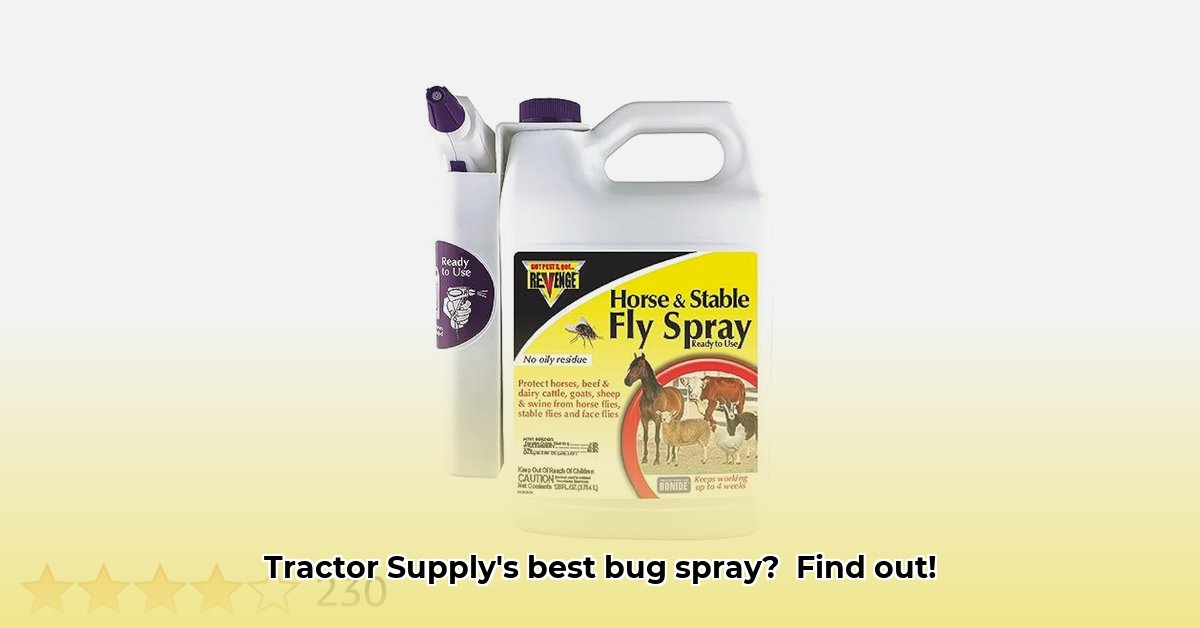
Finding effective and environmentally responsible pest control solutions is crucial for sustainable agriculture. This guide explores sustainable pest management options available at Tractor Supply, focusing on Integrated Pest Management (IPM) and comparing products like Cedarcide and Farmworks with ecologically sound alternatives. We'll provide a practical framework to help you choose the best approach for your farm. For more information on pest control options from Tractor Supply, check out this helpful resource: Tractor Supply Pest Control.
Understanding Integrated Pest Management (IPM): A Holistic Approach
Traditional pest control often relies heavily on synthetic insecticides. However, Integrated Pest Management (IPM) offers a more sustainable and effective alternative. IPM is a holistic approach that minimizes pesticide use while maximizing crop protection. It focuses on preventing pest problems before they arise and using a combination of techniques to keep pest populations below economically damaging levels. Isn't a healthy ecosystem the best defense against pests?
IPM involves several key strategies:
- Monitoring: Regularly inspect crops for pest presence and damage. Early detection is critical for effective management.
- Prevention: Implement cultural practices like crop rotation, proper planting density, and weed control to reduce pest attractiveness and establishment.
- Biological Control: Introduce natural enemies like beneficial insects or use microbial agents to control pests.
- Mechanical Control: Employ physical methods, such as handpicking, trapping, or barriers, to remove pests.
- Chemical Control (Last Resort): Use pesticides only when necessary, selecting the least toxic option and strictly adhering to label instructions.
Evaluating Insecticides: Cedarcide and Farmworks at Tractor Supply
Tractor Supply offers insecticides like Cedarcide and Farmworks. Understanding their composition and impact is vital for informed decision-making.
Cedarcide: Often formulated with cedar oil, Cedarcide is considered a more natural option due to its plant-based origin. However, its effectiveness can vary depending on the specific pest and environmental conditions. While generally considered lower in toxicity than synthetic insecticides, its long-term environmental impact is still a subject of ongoing research.
Farmworks: The composition of Farmworks products can vary widely. Carefully read product labels to ascertain the active ingredients. Some Farmworks products may contain synthetic pyrethroids, effective insecticides but with potentially broader environmental impacts and possible harm to beneficial insects.
It's crucial to always read and follow the label instructions for any pesticide. Do you know how much the overuse of broad-spectrum insecticides can affect beneficial insect populations?
Sustainable Alternatives: Nature's Pest Control
Before resorting to chemical insecticides, consider these environmentally friendly alternatives:
Biological Control: Introduce beneficial insects, nematodes, or microorganisms that prey on or parasitize target pests. Ladybugs are a classic example, feeding on aphids. This method requires research to identify species effective against specific pests in your region.
Cultural Control: Implement practices like crop rotation, companion planting (planting different crops together to discourage pests), and adjusting planting times to avoid peak pest activity. Has crop rotation improved your soil health and reduced disease incidence?
Mechanical Control: Employ methods such as handpicking, traps, or barriers to physically remove or exclude pests from crops. This can be labor-intensive but highly effective for small infestations.
Choosing the Right Approach: A Decision Matrix
Selecting the most appropriate pest management strategy involves considering several factors: the specific pests involved, the extent of the infestation, the crop's sensitivity, and environmental concerns. The following table summarizes the pros and cons of each approach:
| Method | Pros | Cons |
|---|---|---|
| Chemical Insecticides | Rapid action, effective for severe infestations | Potential harm to beneficial insects, environment, possible resistance development |
| Biological Control | Environmentally friendly, long-term control | Requires research, may be slower acting than chemical controls |
| Cultural Control | Prevents pest problems, improves soil health | Requires careful planning and monitoring |
| Mechanical Control | Simple, effective for small infestations, environmentally benign | Labor-intensive, may not be suitable for widespread infestations |
Implementation and Monitoring: A Step-by-Step Guide
- Identify Pests: Accurately identify pest species to tailor control measures.
- Assess Infestation Severity: Monitor pest populations to determine the extent of the problem.
- Select Control Methods: Choose the most appropriate IPM techniques based on the information gathered.
- Implement Control: Carefully apply chosen methods, precisely following instructions.
- Monitor Efficacy: Regularly assess the effectiveness of the chosen strategies, adapting the approach as needed. Keep detailed records of your actions and results for future reference. Data-driven adjustments are key to long-term success.
Conclusion: Sustainable Pest Management for a Thriving Farm
Balancing crop protection with environmental sustainability is paramount. IPM offers a path towards achieving this balance, minimizing reliance on synthetic insecticides while effectively managing pests. By combining monitoring, preventive measures, biological, cultural, and mechanical controls – and employing chemical control only as a last resort — you can create a more sustainable and resilient farming system. Remember your local agricultural extension service can be a valuable resource. What methods are you employing for successful pest management on your farm?